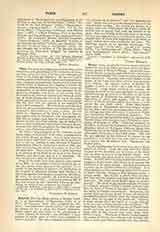

Fleury (more completely FLEURY-Saint-BENOIT), Abbey of, one of the oldest and most celebrated Benedictine abbeys of Western Europe. Its modern name is Saint-Benoitsur-Loire, applicable both to the monastery and the township with which the abbey has always been associated. Situated, as its name implies, on the banks of the Loire, the little town is of easy access from Orleans. Its railway station, St-Benoit—St-Aignan (Loiret) is a little over a mile from the old Floriacum. Long before reaching the station, the traveller is struck by the imposing mass of a monastic church looming up solitary in the plain of the Loire. The church of Floriacum has survived the stately habitation of abbot and monks. The list of the abbots of Fleury contains eighty-nine names, a noble record for one single abbey. From Merovingian names like St. Mommolus, and Carlovingian names like St. Abbo, we come upon names that arouse different feelings, like Odet de Coligny (Cardinal de Chatillon), Armand du Plessis (Cardinal de Richelieu). The last twenty-two abbots held the abbey in commendam. The list closes with Georges-Louis Phelypeaux, Archbishop of Bourges, in 1789. Tradition, accepted by Mabillon, attributes the foundation of Fleury to Leodebaldus, Abbot of St-Aignan (Orleans) about 640. Before the days of the monks there was a Gallo-Roman villa called Floriacum, in the Vallis aurea. This was the spot selected by the Abbot of St-Aignan for his foundation, and from the very first Fleury seems to have known the Benedictine rule. Rigomarus was its first abbot.
Church building must have made busy men of many abbots of Fleury. From the very start the abbey boasted of two churches, one in honor of St. Peter and the other in honor of the Blessed Virgin. This latter became the great basilica that survived every storm. In 1022 Abbot Gauzlin started the erection of a gigantic feudal tower, intending, it to be one day the west front of the abbey church. His bold plan became a reality, and in 1218 the edifice was completed. It is a fine specimen of the romanesque style, and the tower of Abbot Gauzlin, resting on fifty columns, forms a unique porch. The church is about three hundred feet long and one hundred and forty feet wide at the transepts. The cryptae would repay an artist’s journey. The choir of the church contains the tomb of a French monarch, Philip I, buried there in 1108. But the boast of Fleury is the relics of St. Benedict, the father of Western monasticism. Mommolus, the second Abbot of Fleury, is said to have effected their transfer from Monte Cassino when that abbey fell into decay after the ravages of the Lombards. Nothing is more certain than the belief of western Europe in the presence of these precious relics at Fleury. To them more than to its flourishing schools Fleury owed wealth and fame, and today French piety surrounds them with no less honor than when kings came thither to pray. The monks of Monte Cassino impugn the claims of Fleury, but without ever showing any relics to make good their contention that they possess the body of the founder. No doubt there is much fabulous matter in the Fleury accounts of the famous transfer, but we must remember they were written at the time when even good causes were more effectually defended by introducing the supernatural than by the most obvious natural explanations.
ANSCAR VONIER

